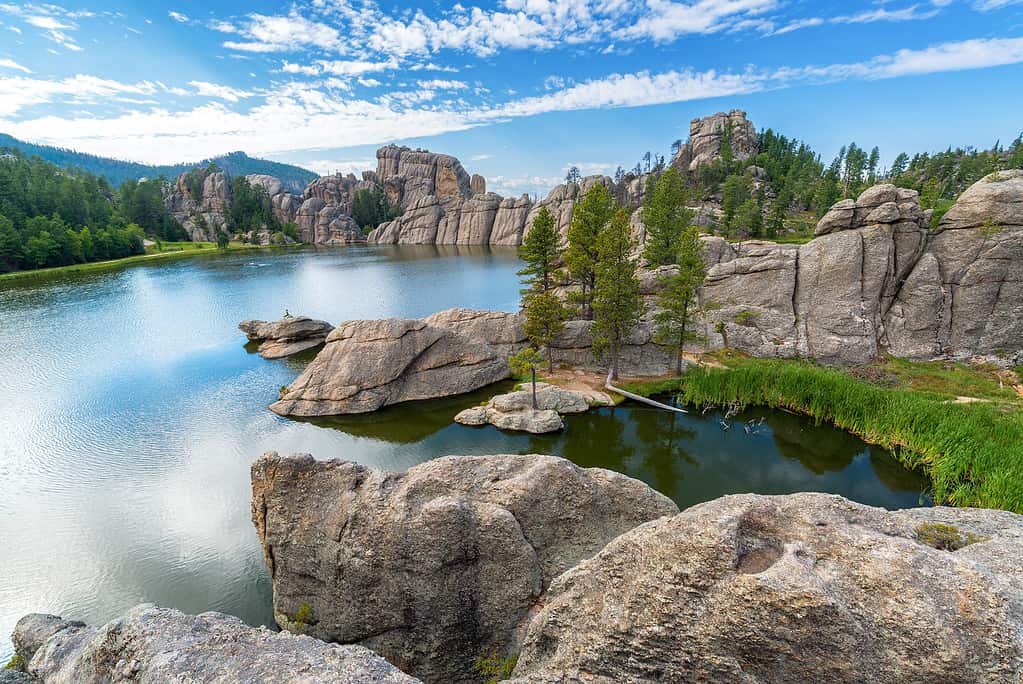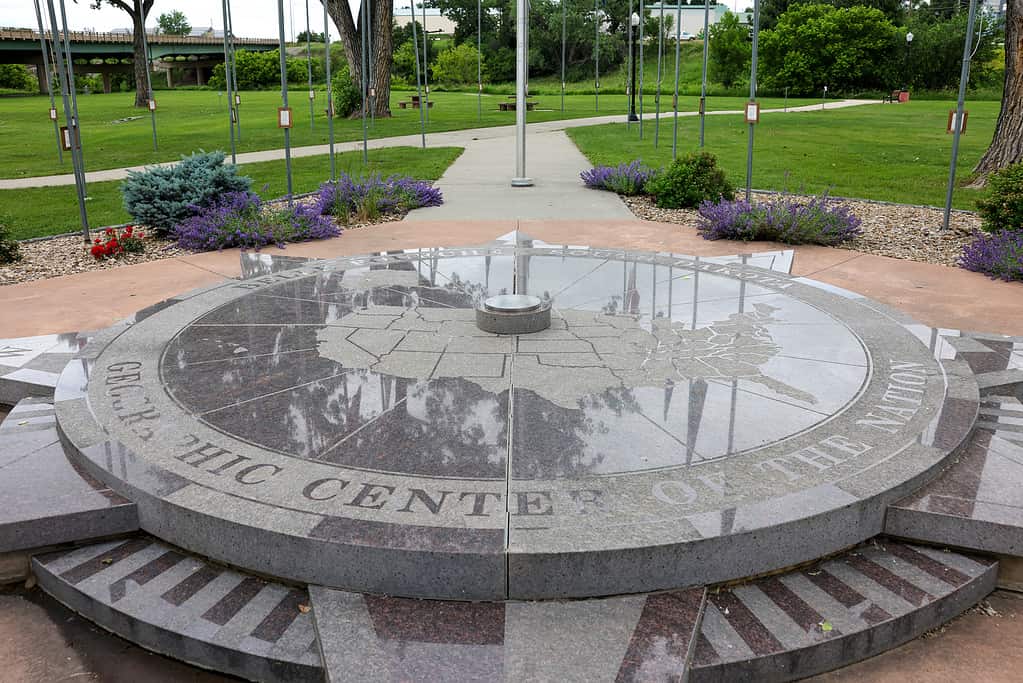South Dakota may not have a booming population but this state is brimming with natural beauty and wonder, causing many of its counties to experience an increase in growth. Known as the Mount Rushmore State after its famous carved rock sculpture, South Dakota also has plenty of prairie, forests, and two major monuments that honor four past U.S. Presidents and a famous Native American tribal leader.
If you’re considering moving to South Dakota or just want to know more about its population growth, it’s helpful to understand where (and why) people are flocking. The capital city Pierre is centrally located but the largest city, Sioux Falls, has other features that make it a desirable destination. Others are a good balance between location and amenities.
In total, South Dakota has 66 counties. Each county is run and governed by a board that helps decide local municipal matters. This is important because this governing body makes many decisions that directly impact the residents of the entire county, which can include multiple towns. Typically, each county has a large town or city near the center or in a prominent place within the county. It’s also important to note that there are nine areas governed by American Indian tribes within South Dakota. There are nine reservations and four of them include off-reservation trust lands within the state. Two additional off-reservation trust lands in South Dakota are associated with reservations across state lines in nearby states.
Tracking Population Growth
Fortunately for those considering relocating, the U.S. Census Bureau keeps track of population and expected growth. This can help people know what resources or infrastructure need to be directed to which areas as they expand. It is also a good metric to use for the potential for job growth and other features in a town, city, county, or even state.
It can take some time for the data to catch up with the situation, however, since collecting and analyzing data takes time. Using population numbers and other metrics collected in April 2020, the U.S. Census Bureau was able to identify the top-growing counties in South Dakota that they expected to see increase by 2022. The latest data shows the populations of cities, towns, and counties in 2021. Most are on track to reach or even exceed the estimates from 2020. That’s a definite sign that these counties are fast-growing.
#1 Lincoln County

One of the most common animals in South Dakota, black-tailed prairie dogs can be seen throughout Lincoln County.
©RMMPPhotography/Shutterstock.com
According to 2020 numbers, Lincoln County was projected to have up to an 8.9% increase in its population by 2022. It is still a small county overall compared to many municipal areas, with just over 65,000 residents in April 2020. Data collected predicted a population of almost 71,000 by 2022. The most recent data, collected in 2021, showed that this fast-growing county was right on track to meet the estimates. The entire county covers around 576 square miles.
Why is Lincoln Country growing so much? Part of it has to do with the low population to begin with. With only around 65,000 residents, even a small increase is a big change for this county. It is still the third-largest county in the state and is named for President Abraham Lincoln. Lincoln County is in the southeastern part of the state. Canton, South Dakota is the county seat and has a population of just over 3,000.
This charming small town is located near Sioux Falls, the largest and most populated city in the state. Sioux Falls is just north of Lincoln County, although the entire region was primarily inhabited by the Sioux tribes when settlers from the eastern U.S. first came to the Dakota territories.
#2 Custer County

Custer State Park is located in Custer County, South Dakota.
©Jess Kraft/Shutterstock.com
This county is located on the western edge of the state and is adjacent to Wyoming. At the 2020 census, the population of Custer County was just 8,319 people. Expected population growth of 8.3% puts the 2022 population around 9,000 residents. Even with a small population, Custer County still looms large in the history of South Dakota. General George A. Custer, and 1,000 men, arrived in the area in 1874 in search of gold. The Black Hills of South Dakota were rumored to be rich in gold, leading many to seek their fortunes in this state. Early success brought a lot of people to Custer City, which was established in 1875, but gold discoveries in other areas led to a rapid fall in population.
The path to becoming the county city was quite interesting for Custer City. Other nearby cities wanted to claim the title for themselves and sought to outsmart the local representative for Custer when they voted in 1877. Even though the vote and government records had nearby Hayward as the winner, residents of Custer staged an elaborate mock battle that night. While the representatives were distracted, the “actors” snuck off with the records and made sure that Custer became the county seat.
#3 Fall River County

There are numerous mammoth fossils in Hot Springs, South Dakota.
©Jeff the quiet / CC0 – License
2020 data showed just 6,971 residents in Fall River County. 2022 was projected to have around 7,370 residents, a 5.7% increase. Fall River County is tied to Oglala Lakota County, which is to the east. Oglala Lakota County resides entirely within reservation lands, specifically the Pine Ridge Indian Reservation. It is a dry county and does not allow alcohol. Some county business and government functions go through Fall River County offices, specifically the offices of Auditor, Treasurer, Director of Equalization, State’s Attorney, and Registrar of Deeds.
The county seat of Hot Springs, South Dakota has warm mineral waters that attract many visitors. It is also home to one of the most extensive paleontological sites in the U.S. called the Mammoth Site of Hot Springs. These four acres contain active dig sites which include some of the best preserved and most extensive mammoth remains in the country. Hot Springs is located in the northern part of the county but is easy to access using state highways as well as local roads. Nearby Wind Cave National Park is in Custer County. It is another fun feature that many residents of Hot Springs can enjoy.
#4 Lawrence County

Deadwood, South Dakota embraces the small-town feel that visitors and residents love.
©lavin photography/iStock via Getty Images
Lawrence County is a bit larger and had 25,766 residents in the April 2020 census. Projected population growth of 5.6% would put the 2022 population around 27,214. Lawrence County is just south of Butte County, which is next on our list. Like Custer County, it is on the western edge of the state right next to Wyoming. The Black Hills dominate the landscape in Lawrence County and were a major point of conflict during its history. The county’s border was originally established in 1874 but it wasn’t until a peace treaty with the Sioux in 1877 that the county was officially organized.
Gold mines, including the long-running Homestake Gold Mine, were important to the development of the county. You can see artifacts and learn more about this wild frontier in Deadwood, which was once the largest and most prosperous town in the Dakotas. The Adams Museum features exhibits all about the wild frontier. Key figures in history like Wild Bill Hickcok and Calamity Jane lived there and are buried in nearby Mount Moriah cemetery. You can even try your hand panning for gold at one of the mines.
#5 Butte County

The Geographic Center of the Nation Monument is marked in Belle Fourche, South Dakota.
©Bo Shen/iStock via Getty Images
Just south of Lawrence County is Butte County, South Dakota. The 2020 census showed a population of 10,238 and the 2022 projection showed 5.2% growth to a population of 10,774. It is named for the numerous small hills in the landscape of vast prairie. When it was established, the nearby town of Minnesela was already bustling. Many expected Minnesela to be the county seat. However, the railroad was built closer to Belle Fourche. This also brought in new residents to help sway the numbers for the election.
Belle Fourche is still the county seat. It also happens to be the geographic center of the United States. There is a marker in the ground that serves as a national monument and the Center of the Nation museum nearby. The history of Belle Fourche and Butte County is rich with cowboys, ranchers, cattle drives, old saloons, and everything that you picture when you think of the Wild West. Agriculture is still a prominent industry in the area.
The photo featured at the top of this post is © Ultima_Gaina/iStock via Getty Images
Thank you for reading! Have some feedback for us? Contact the AZ Animals editorial team.







